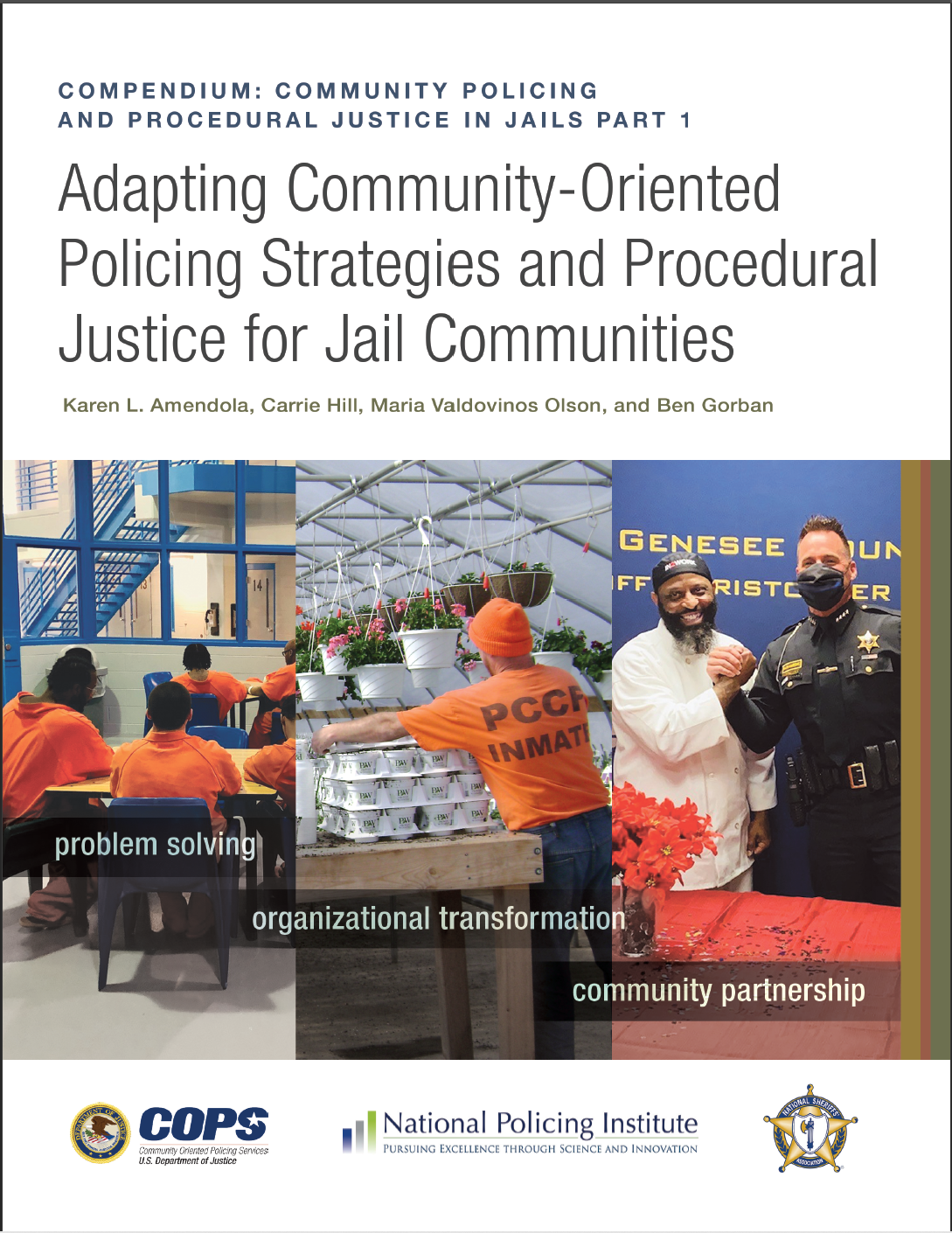Publication Date
February 2023
Author(s)
Karen L. Amendola, Carrie Hill, Maria Valdovinos Olson, and Ben Gorban
Abstract
Download this nine-part compendium using the links below. (The main table of contents also includes links to each section.)
Jails are communities unto themselves, but the term “community policing” has not typically been used in jail settings. Nevertheless, sheriffs, jail managers, and jail personnel engage in many activities that are consistent with a community policing approach, such as community partnerships and problem-solving. Jails have even been characterized as the “missing piece in the community-oriented policing paradigm.”
Sheriffs are known to be community-oriented, and many contend that this emphasis is as important in jails as it is in towns, cities, counties, and communities nationwide.
This compendium includes a report on a national survey of sheriffs who operate jail facilities. It also features promising practices that engage internal and external communities to address challenges within jails. Many of these uniquely developed programs illustrate how community-based efforts are successful in addressing human trafficking, domestic violence, criminal recidivism, and more.
This set of resources, developed by the National Policing Institute and the National Sheriffs’ Association in collaboration with many law enforcement partners, features programs and practices used by sheriffs and jail personnel who work every day to end the cycle of repeat offending, violence, and transformation. These resources can be efficiently and effectively adopted by other agencies nationwide.
Part 1. Adapting Community-Oriented Policing Strategies and Procedural Justice for Jail Communities
Part 2. Quick Reference Guide
Part 3. Research Brief
Part 4. Promising Practices, Examples of Promising Practices from the Field
Part 5.1. Case Study. Pathways ARC (Achieving Recovery by Choice), Franklin County (Ohio) Sheriff’s Office
Part 5.2. Case Study. The Inmate Growth Naturally and Intentionally Through Education (I.G.N.I.T.E.) Program, Genesee County (Michigan) Sheriff’s Office
Part 5.3a. Case Study. Gender Responsive Programming, Los Angeles County (California) Sheriff’s Department
Part 5.3b. Case Study. Town Sheriff Model, Los Angeles County (California) Sheriff’s Department
Part 5.4. Case Study. Familiar Faces Action and Community Transition (F2ACT) Program, Louisville (Kentucky) Metro Department of Corrections
Part 5.5. Case Study. Behavioral Care Center (BCC), Davidson County (Tennessee) Sheriff’s Office
Part 5.6. Case Study. The Farm Program, Plymouth County (Massachusetts) Sheriff’s Office
Part 5.7. Case Study. Sheriff’s Anti-Trafficking Initiative (SATI), Suffolk County (New York) Sheriff’s Office
Part 6. Jails and Community-Based Strategies Survey Community Oriented Policing Strategies Employed in Jail Communities
Part 7. Pandemic Behind Bars—Lessons Learned in Handling COVID-19 in Jails Strategy Brief
Part 8. Appendix A. Agencies that Participated in the Survey
Part 9. Appendix B. Focus Group Overview and Script
Research Design
Non-experimental
Research Methods
Case study, Interviews, Literature review, Focus groups, Surveys
Recommended Citation
Amendola, K. L., Hill, C., Valdovinos Olson, M., & Gorban, B. (2023). Adapting community-oriented policing strategies and procedural justice for jail communities. Compendium: Community policing and procedural justice in jails parts 1 – 9. Washington, DC: Office of Community Oriented Policing Services.
Strategic Priority Area(s)
Topic Area(s)
Contact
For general inquiries, please contact us at info@policinginstitute.org
Share
Strategic Priority Area(s)
Topic Area(s)
Contact
For general inquiries, please contact us at info@policefoundation.org
Share


